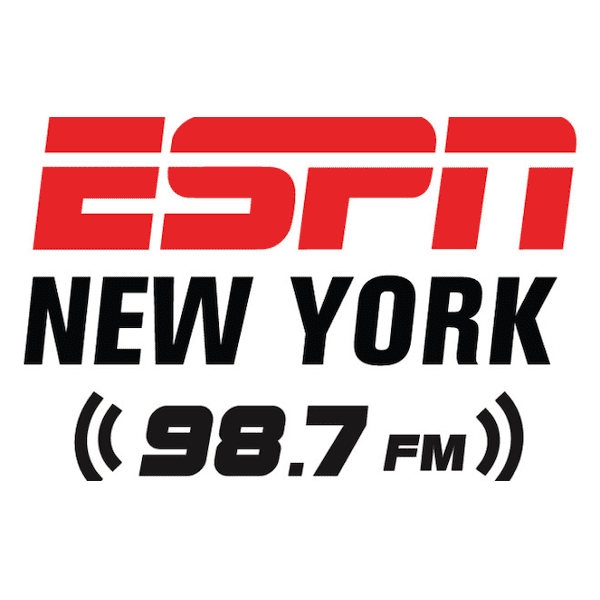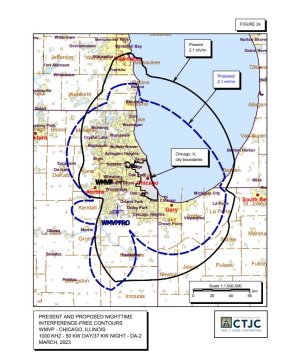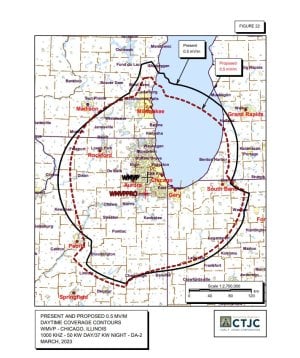WMVP AM 1000 has filed an application to move their transmitter from Downers Grove, IL to Joliet, IL, where it will be diplexed with the nighttime facilities of WCPT AM 820. There they will use 50 kW during day using two of the towers and 37 kW at night using 4 of the towers.
The FCC application: https://enterpriseefiling.fcc.gov/d...&id=25076f918974ea2901898ec7cb7f0745&goBack=N
The FCC application: https://enterpriseefiling.fcc.gov/d...&id=25076f918974ea2901898ec7cb7f0745&goBack=N





